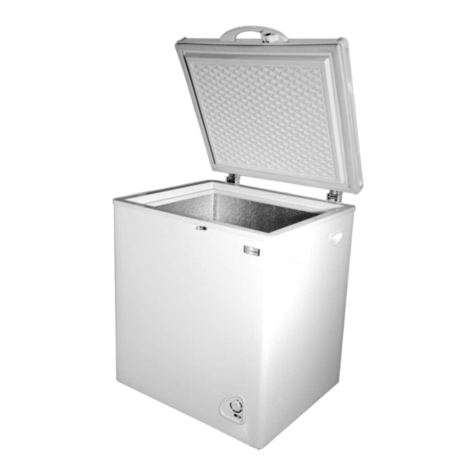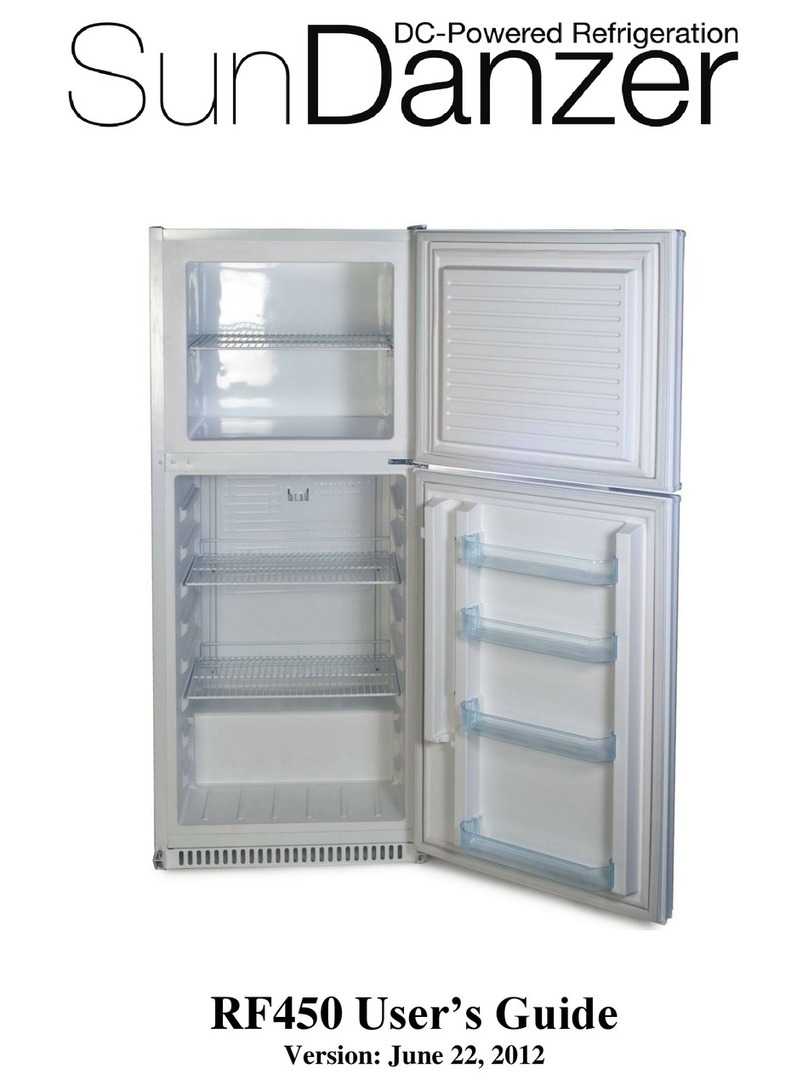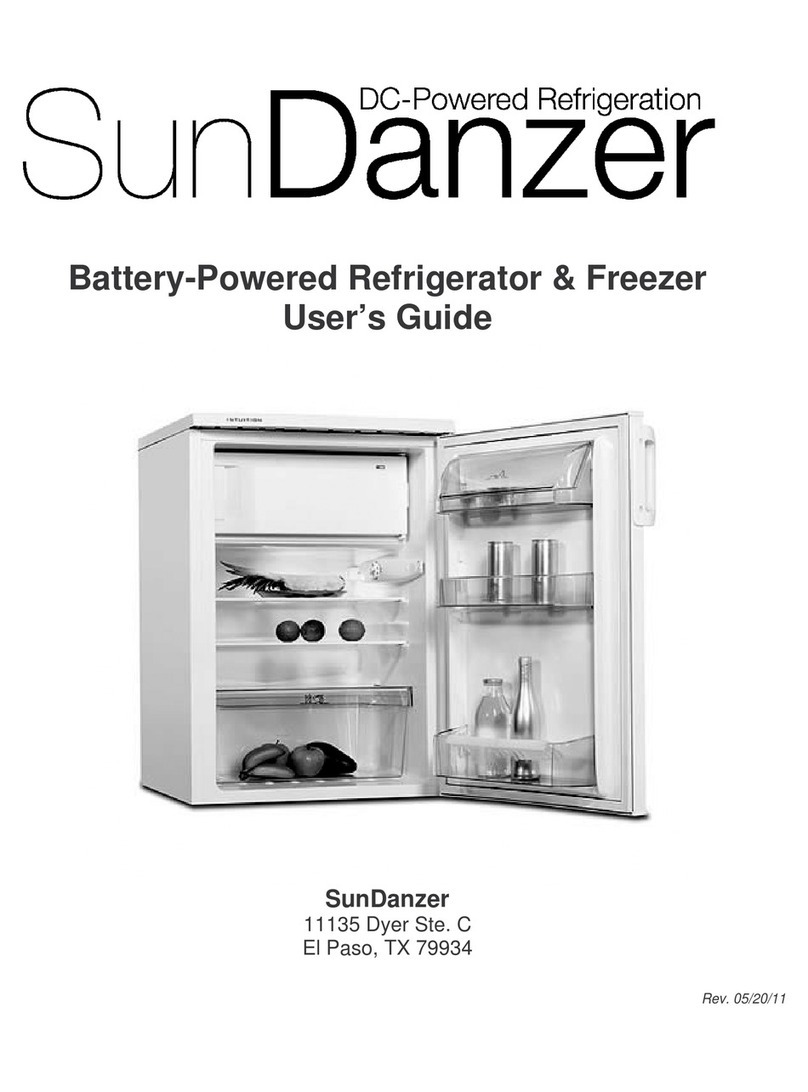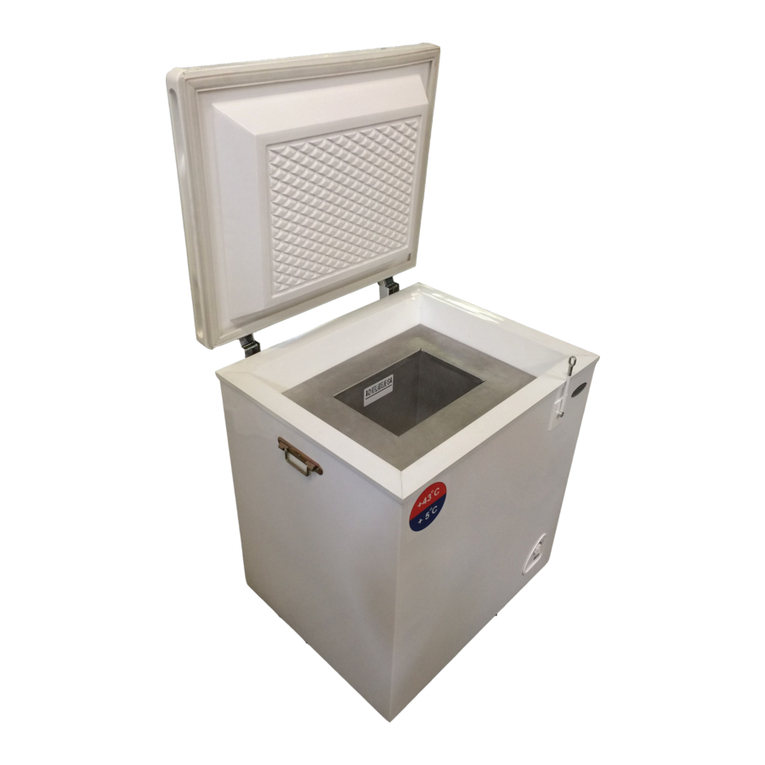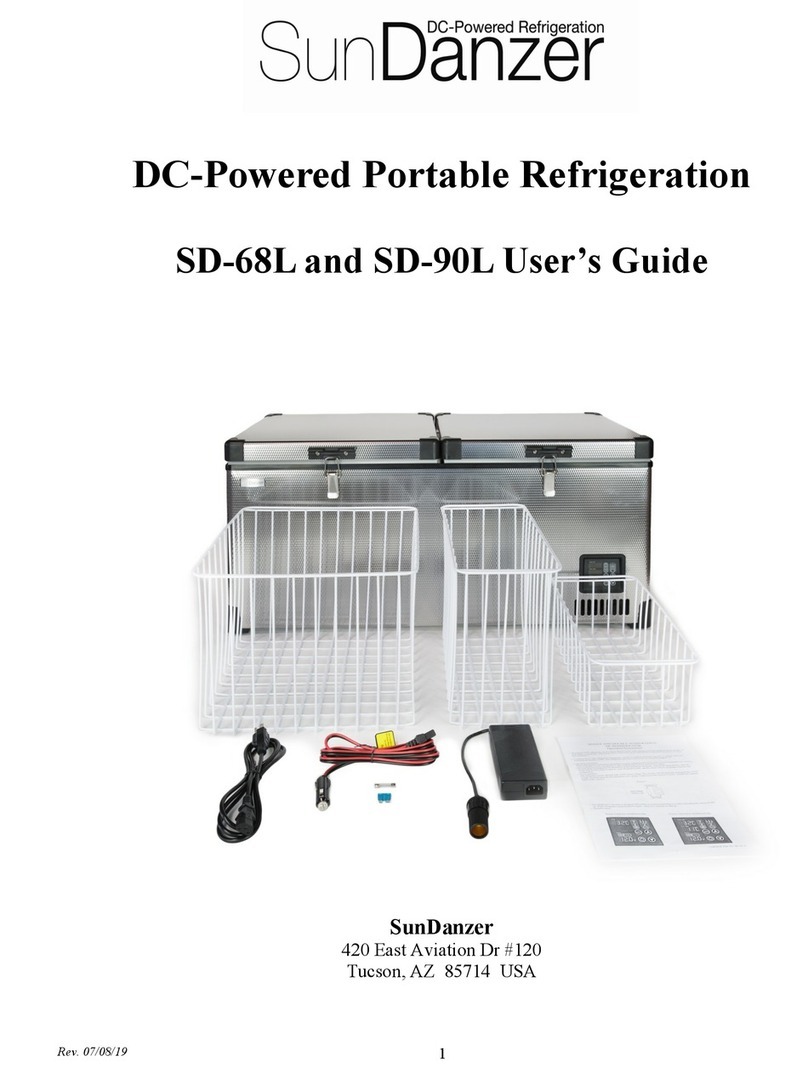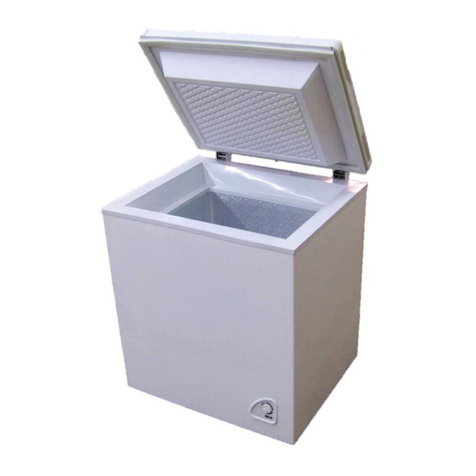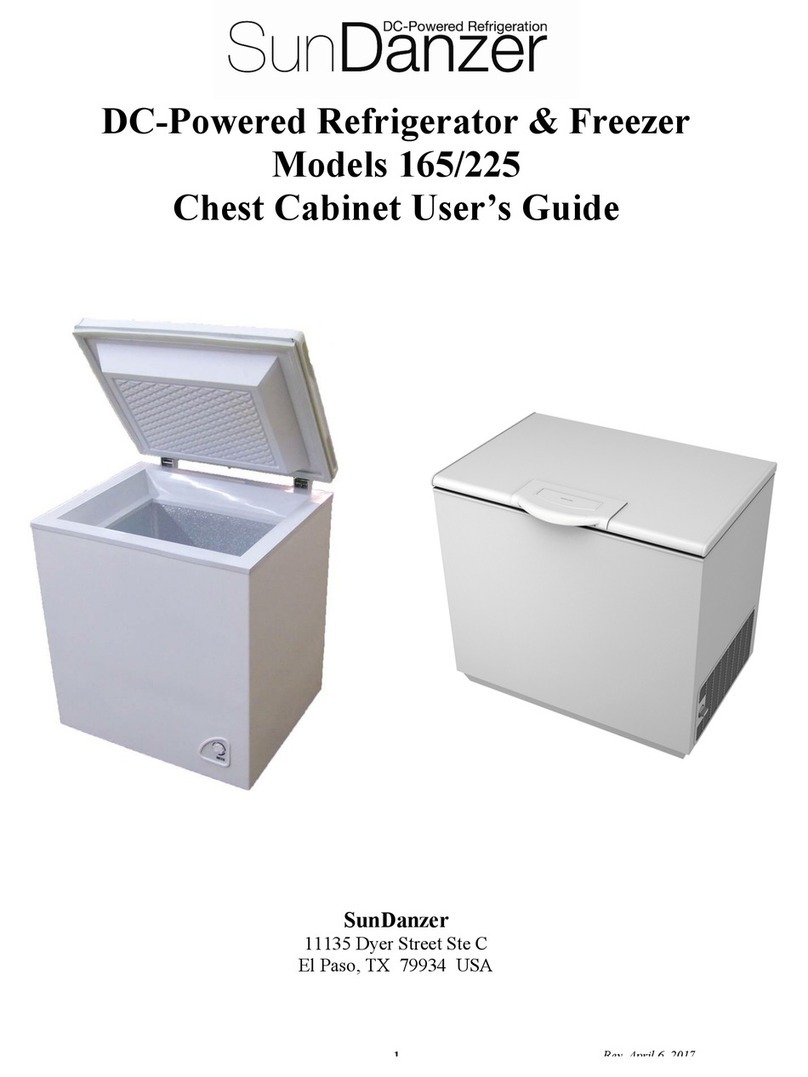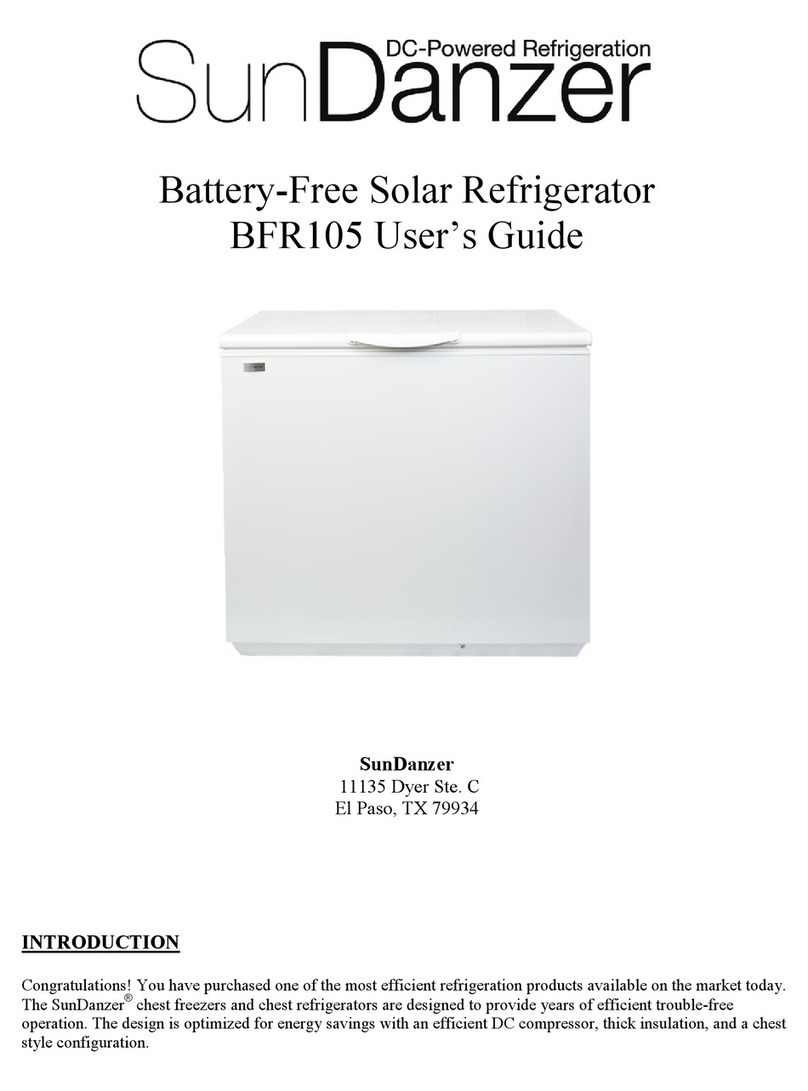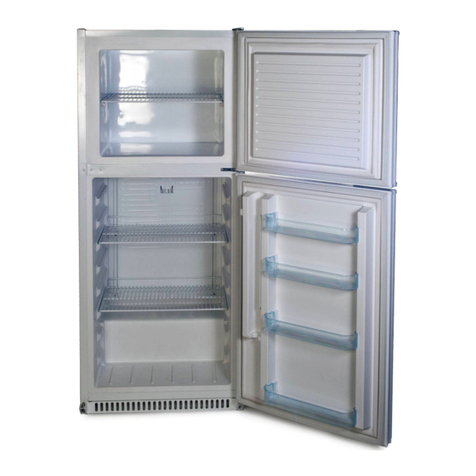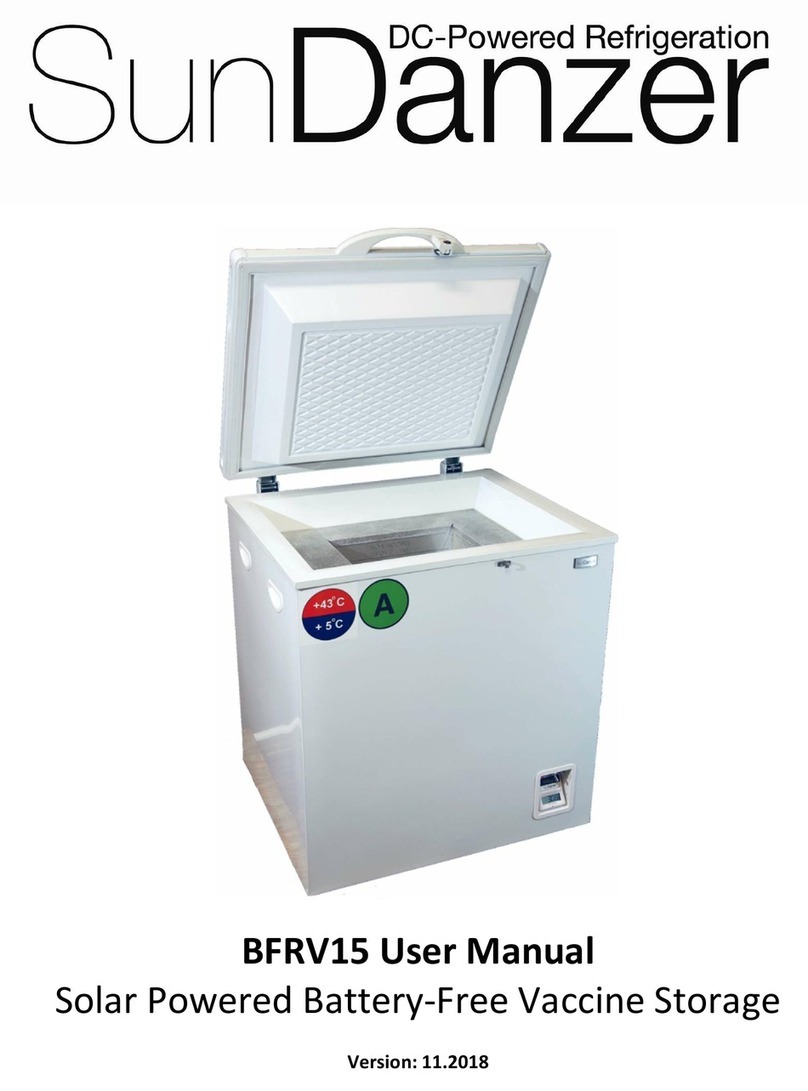
Energy Saving Advice
•Do not install the appliance close to sources of heat, such as a stove, boiler, heater, chimney, etc, and avoid
exposure of the appliance to direct sunlight.
•Locate the appliance in a cool well-ventilated room and make sure that the air vents of the compressor housing
cover are not obstructed. Also allow adequate spacing around the cabinet for air circulation (3in. or 7.5cm)
•Avoid unnecessary frosting in the cabinet by packing all food and liquids in airtight packages or containers.
•Always keep foodstuff stored in tightly sealed packaging or containers, and allow some space for air to circulate
around each item.
•Avoid keeping the lid open for extended periods of time or opening the lid too frequently as warm air will enter the
cabinet and cause the compressor run unnecessarily often.
•Ensure there are no obstructions preventing the lid from closing properly and forming a tight seal.
TROUBLE SHOOTING
Before contacting a service technician, SunDanzer or your local product dealer, check the following points.
If you call out a technician to a fault listed below, or to repair a fault caused by misuse, abuse, or faulty installation, a
charge will be made even if the appliance is under warranty.
SYMPTOM SOLUTION
Appliance connected
to power, but does not
operate
•Check if 12 or 24V DC is present at the appliance. If not check all connections
and the system battery voltage.
•Check that the polarity is correct “+” is connected to “+” and “–“ to “–“.
•Check the fuse. If blown, replace with a new one.
•The main common problem with installations is voltage drop to the compressor
which causes the unit to fail to start due to “Low Voltage.” Typically a
connection is not as tight as it should be, or the wire size to the compressor is too
small. The low voltage problem occurs at the instant of start-up and is
sometimes difficult to detect with a volt meter because the event is very quick
(<100 ms)
Appliance is
operating, but the
interior is not cold.
•Allow the appliance at least 4 hrs from initial turn-on to become cold.
•Check that the thermostat control knob is turned to the correct setting relevant to
room/ambient temperatures.
•Check that the room/ambient temperature is not approaching the internal
operating temperature and does not exceed to 100oF (38°C).
•Has too much warm foodstuff recently been placed in the cabinet? If so, it is
normal to not be cold and it will take time to return to temperature.
•Does the cabinet have adequate ventilation around the side walls allowing it to
transfer heat properly? (See Installation Section).
The lid will not open. •Has the lid just been opened? If so leave for a few minutes to allow the air
pressure to equalize and try again.
Excessive frost and ice
has built up. •Is the weather hot and humid? If so, this will increase the rate of frost build up in
the cabinet.
•Ensure that foodstuff is properly packaged.
•Check that the lid is closed and has a good seal, and that nothing is preventing
the lid from closing properly.
•Large quantities of food have recently been placed in the cabinet/and or the lid is
frequently opened.
•Ensure that advised periodic cleaning has been carried out.
Noise •Refer to 'Normal Operating Sounds'
CUSTOMER RESPONSIBILITIES
The following items are the responsibility of the customer and are not covered in the warranty:
•Proper care and use of the appliance as described in this manual.
•Damage to the interior or exterior finish or components after delivery.
Rev. 05/21/08
8
